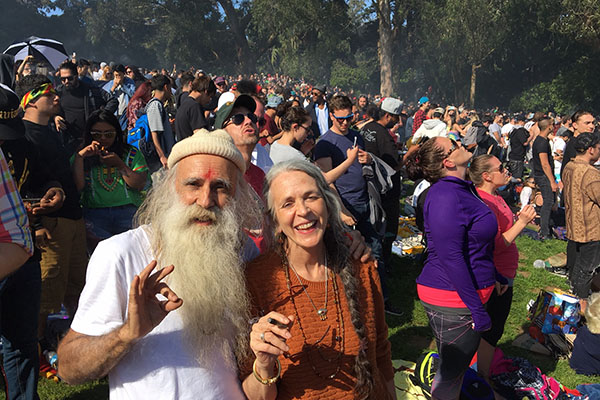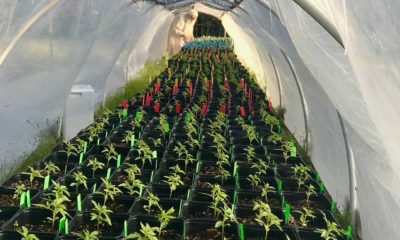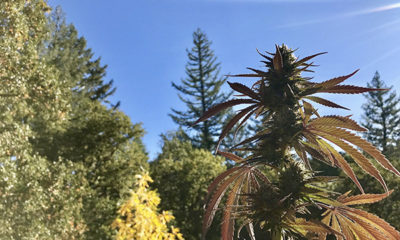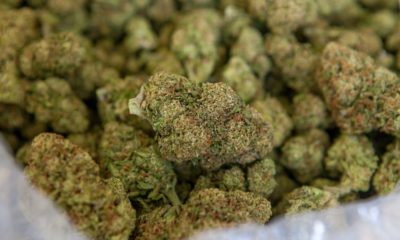
Joint Opinions
Cannabis: It’s Getting Better All the Time
A longtime cannabis cultivator explores the blessings of the modern day.
It’s easy to sit around and complain about how difficult it is to morph from outlaw pot farmer to regulated and legal craft cannabis cultivator. We are currently engulfed by a tidal wave of taxes and fees and permits and professional helpers, which we never had to consider before, and it is overwhelming indeed. Yet, being an Aquarius, I always like to look for the lemonade in the situation, and it’s really pretty easy to find if we just look back a little way into the past.
How many of us remember stashing our stash in secretive corners or rolling joints clandestinely in the restroom stall? Or maybe we’d meet a new person at work and discover they were also a stoner and so we’d surreptitiously slip off to burn a fatty together in the back alley? And God forbid the subject came up at family suppers, as everyone else in your family still considered smoking a joint the same as shooting smack. These cultural perceptions and judgments associated with pot are surely slipping away, and the more people who come out of the cannabis closet, the faster they will disappear all together.
According to David Downs of the SF Chronicle, the smell of marijuana is no longer probable cause to be stopped or search. You do not have to submit to a search of your person, car or home because of suspected marijuana use. I certainly have noticed more and more the distinct odor of people lighting up all over the streets of San Francisco the past few years. There does remain the possibility of a fine if the cop is in a bad mood when he notices you — up to $100 — but, curiously, the fine is steeper if caught smoking tobacco where it is banned: up to $250. When I was a child, I never would have dreamed the day would come when tobacco smokers would be so ostracized, let alone when cannabis smokers would be so accepted. That’s what I call a more than fair trade, with a positive outcome.
Granted, we had a setback with the first Proposition 19 in 1972, which would have decriminalized marijuana possession and cultivation for people 18 and older. (Curiously, Prop 19 in 2010, also known as the Regulate, Control and Tax Cannabis Act, also failed.) The final vote was 33.5 percent for and 66.5 percent against. But I am proud to say that San Francisco was one of the only legislative districts that passed it. Better news came in 1996 with Proposition 215, the medical marijuana initiative, which made California the first state to legalize medical marijuana.
When Miles Herkenham, senior investigator at the National Institute of Mental Health, discovered the human body’s own internal cannabinoid receptor system in 1990, a whole new world opened up. Cannabis, it turns out, really is medicine and is designed to work perfectly with the human body! The limited research which was able to be conducted, due to remaining strict federal laws, proved to be enough to start changing the minds of Americans. Soon, the same relatives who would have condemned you in the past, were looking to cannabis for relief. According to a poll taken for AARP in December 2004, nearly three-fourths of middle age and older Americans supported legalizing marijuana for medical use.
It was in August of 2008, fewer than 10 years ago, that then-California Attorney General Jerry Brown issued guidelines for law enforcement and medical marijuana patients to clarify the state’s laws. The non-binding 11-page document states:
“In light of California’s decision to remove the use and cultivation of physician recommended marijuana from the scope of the state’s drug laws, this office recommends that state and local law enforcement officers not arrest individuals or seize marijuana under federal law when the officer determines from the facts available that the cultivation, possession, or transportation is permitted under California’s medical marijuana laws.”
I remember thinking this was huge, and it was.
I also recall thinking that in September 2016, when news broke about the remains of 13 cannabis plants found buried in a 2,700-year-old Chinese tomb, along with what appeared to be the remains of a Caucasoid shaman. We may be catching up slowly to our distant past, but at least we are on the path again.
Another big step on the path occurred in July of 2010, when the U.S. Department of Veterans Affairs relaxed its cannabis rules for vets, declaring that those who participated in legal state medical marijuana programs would no longer be disqualified from “substance abuse programs, pain control programs, or other clinical programs.” It may seem like a no-brainer to most of us, but the government takes awhile to figure some things out. Let’s hope this trend in helping vets continues to go forward.
Yet another big leap happened in the summer of 2013 when Dr. Sanjay Gupta, a top neurosurgeon who is widely recognized as an expert, came out in favor of medical marijuana on CNN. To hear someone of his stature say, on television news, “we have been terribly and systematically misled for nearly 70 years in the United States, and I apologize for my own role in that,” was another enormous leap.
The following spring, communities of curious cultivators, eager to help shape the upcoming policies, began to form in the growing regions of the state. Up here in Mendocino, a few locals organized a town meeting at The Grange to discuss the future of cannabis, and next thing we knew, by the end of that gathering the Mendocino Cannabis Policy Council (MCPC) was formed. Concurrently, the Emerald Growers Association was developing, later to transform into the California Growers Association (CGA).
That summer, 2014, was the year of the dreaded “anonymous” raids on people’s crops. Unidentified men were jumping from unmarked helicopters into gardens all over the county and were liberally cutting plants down and taking people’s possessions. Rumors of renegade sheriff deputies circulated, and MCPC swung into action to garner public attention and solve the mystery. After months of investigation, it was determined that the the Mendocino County Sheriff’s Department was actually involved in the raids through the California Task Force. The “good old days” of raids were not done yet.
So what’s the good news there? Well, cannabis is what has actually brought together our community in a way that was not possible before. Mendocino County is nearly two-thirds the size of Connecticut, yet the population is only 88,000 people as opposed to 3,574,097 in Connecticut. In other words, there is a lot of open space in this county and it can take up to four hours to drive from one end to the other. Hence, it has always been difficult to meet our neighbors, as our ranches are often miles apart. It took the common cause of cannabis to bring us together into an active community. The gift of the many friends I have made through this process is priceless.
The Emerald Cup is a prime example of how far we have come. It began in 2003 with about 300 people in the little town of Laytonville in Mendocino County. In 2013 it moved to the Sonoma County Fairgrounds in Santa Rosa with an attendance of 15,000. By last year that number scored to 30,000.
And now, looking forward to the Summer of 2017, we have a permanent ordinance in place at last in Mendocino County and can move forward towards obtaining our state licenses. The Mendocino Cannabis Seed Library has been formed to catalogue and exchange heritage seed strains, the Mendocino Appellation Project is busy establishing our growing regions and the 420 Archive is documenting the history of the plant and its place in our culture. We are looking at ways to mold our future through the Mendocino Cannabis Industry Alliance and the International Cannabis Farmers Association. In other words, we are maturing into responsible citizens, with cannabis once again as our teacher.
As of now, 29 states have medical marijuana and with any luck, things will continue to go in that direction. We can look at the dark side, the Jeff Sessions gloom that lingers over us all — but let us not forget how far we have come, and how strong we are as a united community.
TELL US, what recent successes in cannabis policy are you celebrating today?
























